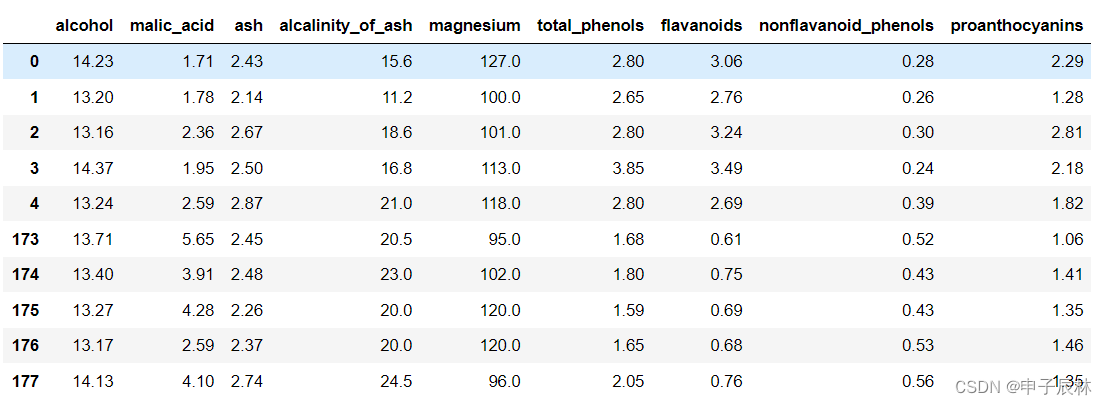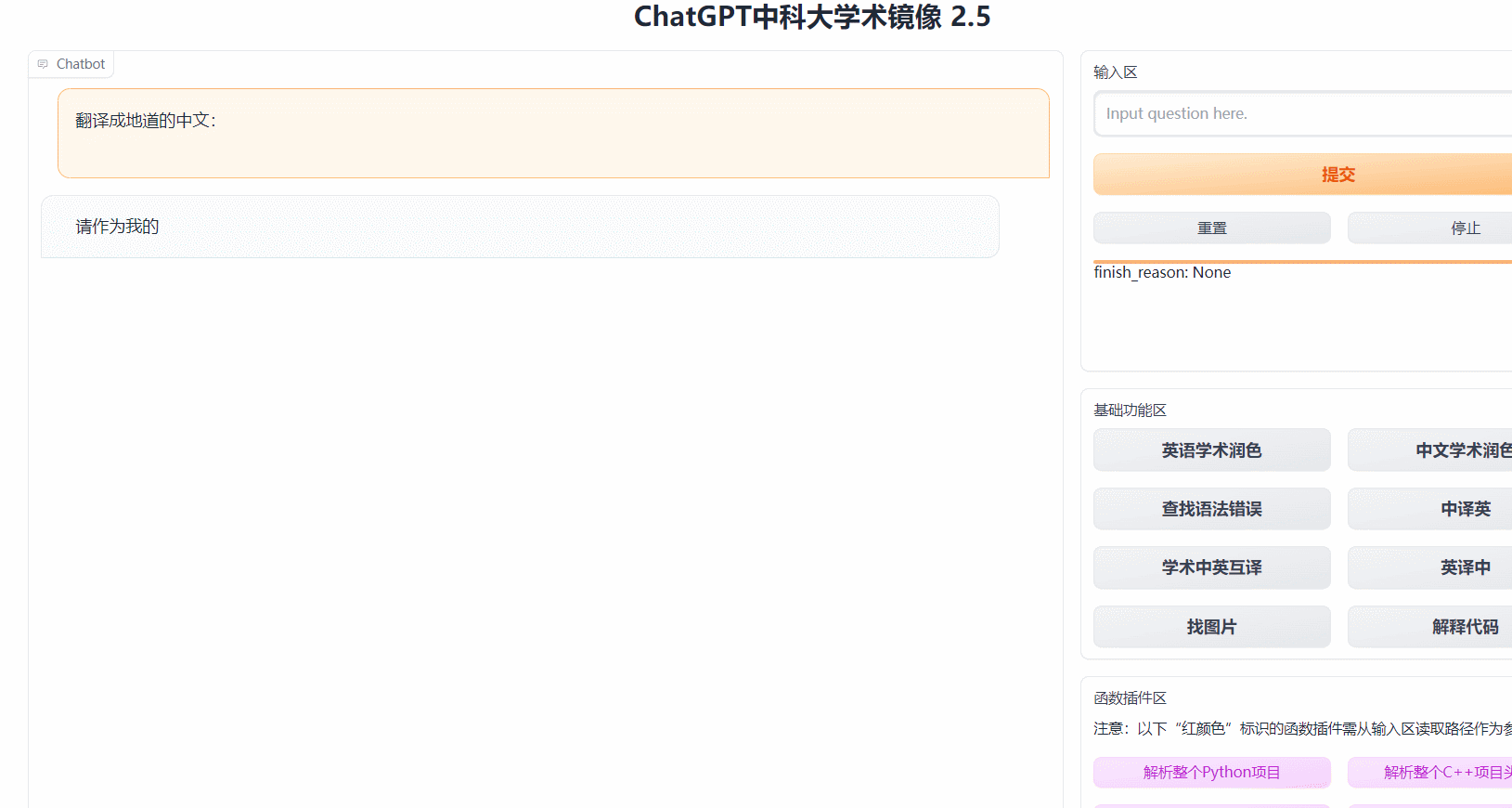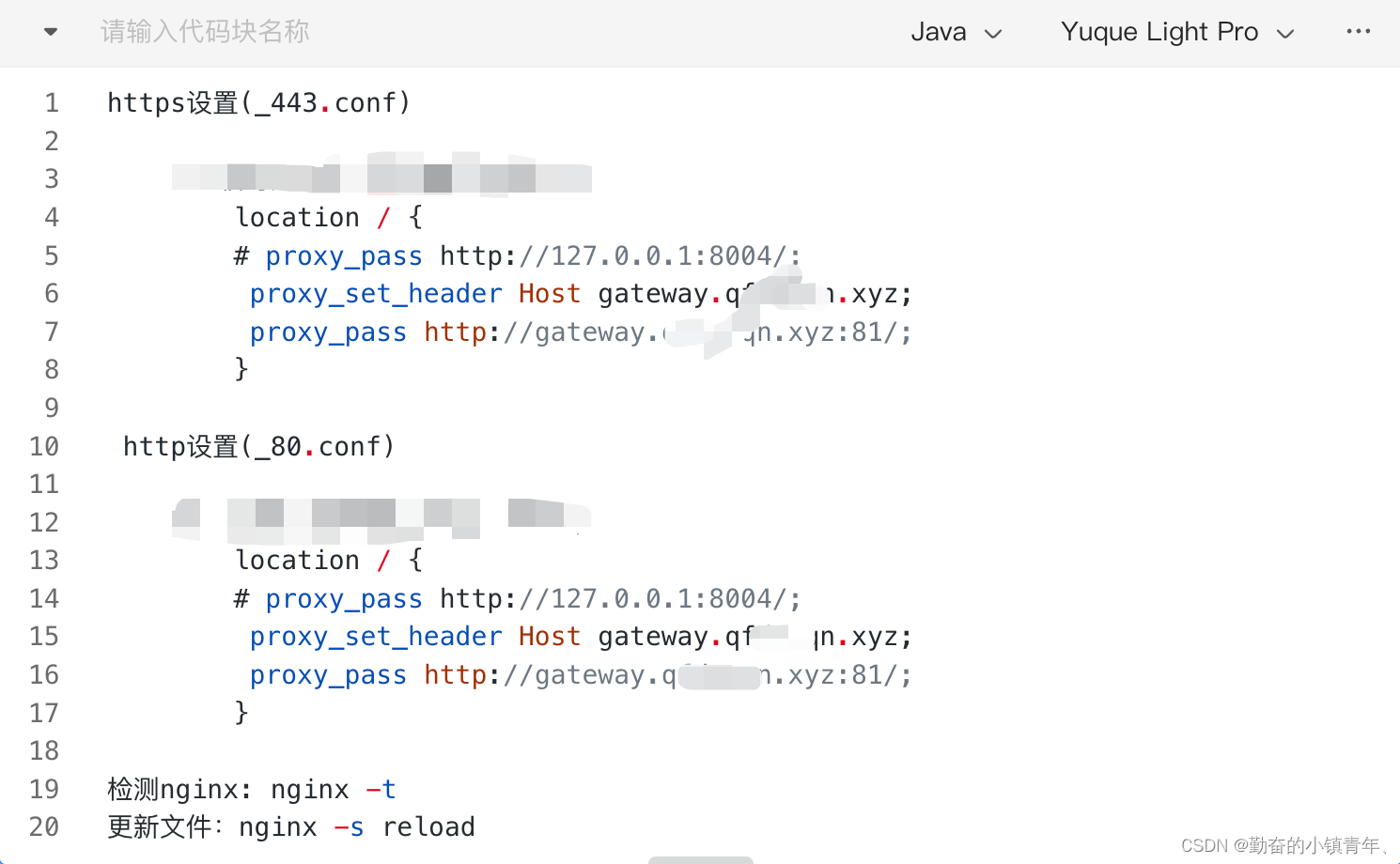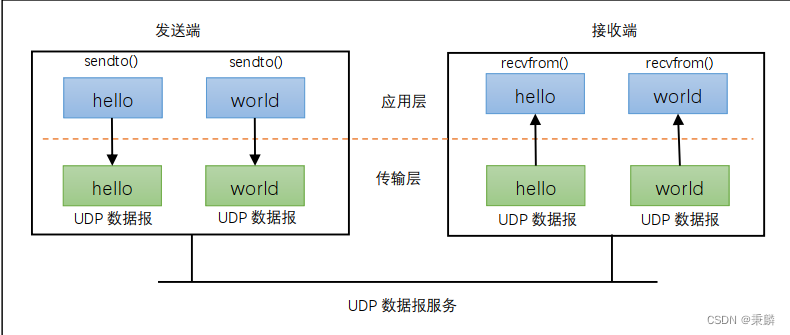前言
上篇博客主要讲了Flutter的Shape实现
Flutter基础入门:实现各种Shape效果
今天主要讲下Flutter中常用的一些容器组件
Flutter中组件数量很多,分类方式也各有不同
比如可以分为有态组价和无态组件
又可以分为容器组件、功能组件等
拿功能组件来说
有用来显示文字的TextView
显示图片的Image
显示列表的ListView等等
不过今天主要讲的还是一些容器组件
那么何为容器组件呢?
容器组件指的是可以容纳下级组件(1个或多个),
使用时以独立组件形式被运用的组件。
比如Row组件,刚刚提到的ListView组件等。
今天讲的容器组件
主要侧重点在于讲他们所支持的一些功能
通过介绍他们需要传入的参数的含义
来更清晰地了解这些容器的功能
而不仅仅是介绍用法
当然,这边也是选择一些常用并且功能强大的组件来介绍
下面正式开始
各种容器
Container
Container会是我们进行Flutter开发中用到的最强大也是最常用的单容器类控件
它可以实现装饰、定位、背景颜色、对齐方式、变换、裁剪等等一系列功能
我们先看下它的构造方法
Container({
super.key,
this.alignment,
this.padding,
this.color,
this.decoration,
this.foregroundDecoration,
double? width,
double? height,
BoxConstraints? constraints,
this.margin,
this.transform,
this.transformAlignment,
this.child,
this.clipBehavior = Clip.none,
})
可以看到,这里可以传入很多的可选入参,我们逐一介绍
alignment
对齐方式,可以设置子组件的对齐方式
举例如下:
Widget build(BuildContext context) {
return Container(
width: 200,
height: 200,
alignment: Alignment.center,
color: Colors.grey,
child: Text('文字控件'),
);
}
Alignment.center点进去会看到,其实是
center = Alignment(0.0, 0.0);
同理:
topLeft = Alignment(-1.0, -1.0);
bottomRight = Alignment(1.0, 1.0);
这样我们就知道了:
Alignment构造方法的第一个参数代表左右位置,第二个参数代表上下位置
0代表中心点,-1代表最左/最上,1代表最右/最下
比如:Alignment(0,1) 就是左右居中,靠下对齐
也就是:
bottomCenter = Alignment(0.0, 1.0);
padding & margin
padding是内边距,margin是外边距
比如:
Widget build(BuildContext context) {
return Container(
width: 200,
height: 200,
padding: EdgeInsets.all(10),
margin: EdgeInsets.only(top: 10),
alignment: Alignment.topLeft,
color: Colors.grey,
child: Text('文字控件'),
);
}
出来效果就是:
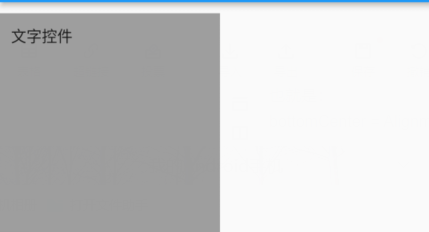
这里要注意,padding & margin需要传入的都是EdgeInsetsGeometry类型
EdgeInsetsGeometry抽象类有两个子类:EdgeInsets和EdgeInsetsDirectional
可以理解为这个类就是用来设置一些间距的
decoration & foregroundDecoration
foregroundDecoration是绘制在child前面的装饰。如果设置decoration, 此时foregroundDecoration 样式会叠加在decoration样式上边
装饰器可以看我这个系列下专门的博客
Flutter基础入门:装饰器Decoration
constraints
constraints是一个BoxConstraints类型
主要用来控制子控件的最小宽高,如下:
Container(
width: 200,
height: 200,
color: Colors.grey,
alignment: Alignment.center,
child: Container(
child: Text('文字控件'),
constraints: BoxConstraints(minWidth: 100,minHeight: 100),
color: Colors.red,
),
);
限制了最小宽高为100后,文字的背景大小就变成100了,而不再是之前紧紧包裹着文字
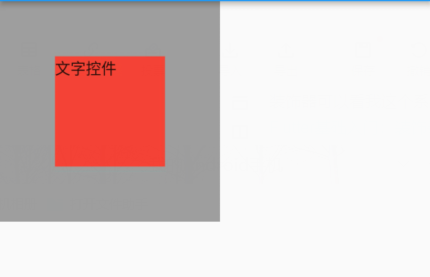
transform & transformAlignment
transform主要是通过一个4*4的变换矩阵来对子组件就行变换
可以实现的效果如:斜切,缩放,平移,旋转,透视等
transformAlignment则是变换的位置,
这个参数的类型和对齐方式alignment参数的类型是一样的
都是AlignmentGeometry类型
默认是Alignment.topLeft
比如我们可以以组件中心位置对Z轴进行旋转变换:
Container(
width: 200,
height: 200,
transformAlignment: Alignment.center,//变换位置:中心点旋转
transform: Matrix4.rotationZ(-0.5),//z轴旋转
color: Colors.grey,
alignment: Alignment.center,
child: Text('文字控件'),
);
效果如下:
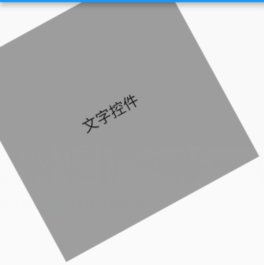
clipBehavior
clipBehavior是是组件内容边缘的切割方式,当组件内容溢出时可以选择不同的裁剪方式

color & width &height & child
color就是用来设置容器填充色的,宽高传入double类型就好
child自然就是子组件了
这些简单的就不演示了
Padding
Padding主要是给子组件添加内边距的,可参考Container的padding
Align
Align用来设置子组件的对齐方式,可参考Container的alignment
ConstrainedBox
ConstrainedBox用来设置最小宽高,需要传入一个BoxConstraints类型,可参考Container的constraints
DecoratedBox
DecoratedBox可以在其子组件绘制前(或后)绘制一些装饰(Decoration),如背景、边框、渐变等。
它的构造函数如下:
const DecoratedBox({
super.key,
required this.decoration,
this.position = DecorationPosition.background,
super.child,
})
其中position属性主要是设置装饰位置的
分为:
(DecorationPosition.foreground)前景,(DecorationPosition.background)背景
Transform
Transform主要是给子组件添加变换效果的的,可参考Container的transform
RotatedBox
用来旋转子组件的容器
const RotatedBox({
super.key,
required this.quarterTurns,
super.child,
})
quarterTurns代表旋转的次数,每次旋转的度数只能是90度的整数倍
所以RotatedBox旋转的角度也只能是90度的整数倍
Clip裁剪相关组件
Clip相关组件主要用来进行对子组件的裁剪,如:
ClipOval:子组件为正方形时剪裁成内贴圆形;为矩形时,剪裁成内贴椭圆
ClipRRect:将子组件剪裁为圆角矩形
ClipRect:默认剪裁掉子组件布局空间之外的绘制内容(溢出部分剪裁)
ClipPath:按照自定义的路径剪裁
下面看具体例子:
class _ClipWidget extends StatelessWidget {
final Image photo = Image.network(
'https://tse1.mm.bing.net/th/id/OET.5272002b31e349ca8b7f061d2d17466f?w=135&h=272&c=7&rs=1&o=5&dpr=2&pid=1.9',
height: 100,
width: 100,
fit: BoxFit.cover,
);
Widget build(BuildContext context) => MaterialApp(
home: Scaffold(
body: Center(
child: Column(
mainAxisAlignment: MainAxisAlignment.center,
crossAxisAlignment: CrossAxisAlignment.center,
children: [
photo,
const SizedBox(
height: 20,
),
ClipOval(
child: photo,
),
const SizedBox(
height: 20,
),
ClipRRect(
child: photo,
borderRadius: const BorderRadius.all(Radius.circular(20)),
),
const SizedBox(
height: 20,
),
Container(
color: Colors.red,
child: Row(
children: [
Align(
alignment: Alignment.centerRight,
widthFactor: 0.5,
child: ClipRect(
child: photo,
),
),
const Text('我是文本')
],
),
),
],
),
),
),
);
}
效果如下:
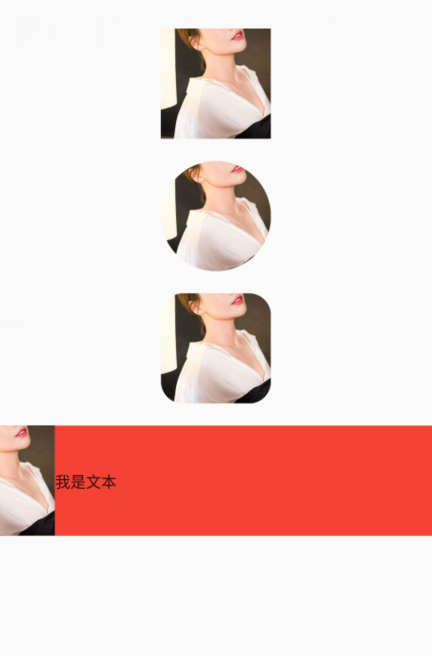
FittedBox
当子组件的宽高比和父组件的宽高比不一样时,我们等比拉伸或者填充父组件,这时我们可以使用FittedBox
Container(
height: 200,
width: 200,
color: Colors.green,
child: FittedBox(
fit: BoxFit.contain,
child: Container(
height: 50,
width: 80,
color: Colors.red,
),
),
);
如图:
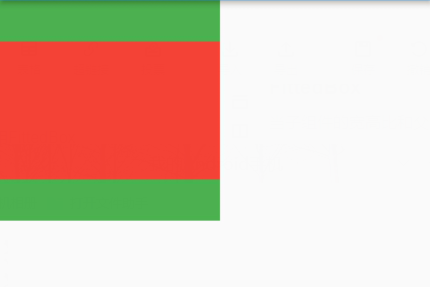
其中fit参数表示了子控件的填充方式,说明如下:
fill:填充父组件,宽高比发生变化。
contain:等比拉伸,但子控件不能超出父控件。
cover:尽可能的小,等比拉伸充满父控件。
fitWidth:等比拉伸,宽充满父控件。
fitHeight:等比拉伸,高充满父控件。
none:默认子控件居中,不做拉伸处理,超出父控件的部分裁剪。
scaleDown:在子控件为Image且缩小的情况和contain一样,否则和none一样。
card
用来把子组件做成卡片类的样式
也可以用来实现一些Shape的效果
主要属性如下:
const Card({
super.key,
this.color,//背景色
this.shadowColor,//阴影颜色
this.surfaceTintColor,
this.elevation,//阴影高度
this.shape,
this.borderOnForeground = true,//是否在 child 前绘制 border,默认为 true
this.margin,
this.clipBehavior,
this.child,
this.semanticContainer = true,
})
可以看到大部分还是和Container类似的
Row & Column
这两个类似Android的LinearLayout
他们的children属性可以传入一个子组件数组
Row是对子组件进行横向布局
Column则是对子组件进行纵向布局
Wrap & Stack
Wrap 流式布局
Stack 类似Android中的帧布局FrameLayout
Scaffold
Scaffold翻译过来是脚手架的意思
其实也是为了方便我们快速搭建页面而提供给我们的一个模板组件
const Scaffold({
super.key,
this.appBar,
this.body,
this.floatingActionButton,
this.floatingActionButtonLocation,
this.floatingActionButtonAnimator,
this.persistentFooterButtons,
this.persistentFooterAlignment = AlignmentDirectional.centerEnd,
this.drawer,
this.onDrawerChanged,
this.endDrawer,
this.onEndDrawerChanged,
this.bottomNavigationBar,
this.bottomSheet,
this.backgroundColor,
this.resizeToAvoidBottomInset,
this.primary = true,
this.drawerDragStartBehavior = DragStartBehavior.start,
this.extendBody = false,
this.extendBodyBehindAppBar = false,
this.drawerScrimColor,
this.drawerEdgeDragWidth,
this.drawerEnableOpenDragGesture = true,
this.endDrawerEnableOpenDragGesture = true,
this.restorationId,
})
Scaffold的属性特别多,我们挑一些常用的来讲
appBar:页面顶部栏,是一个PreferredSizeWidget抽象类,可以选择AppBar,TabBar这些实现类来作为顶部栏
body:主体部分,放入一个子组件即可
bottomNavigationBar:底部组件,一般用于实现首页底部的按钮切换功能
drawer & endDrawer:左右侧滑组件
backgroundColor:背景色
floatingActionButton:浮动按钮
floatingActionButtonLocation:浮动按钮位置
下面写一个Scaffold包裹的页面
实现一些基本的演示功能:
import 'package:flutter/material.dart';
void main() {
runApp(MaterialApp(
title: "首页",
home: CustomScaffold(),
));
}
class CustomScaffold extends StatefulWidget {
const CustomScaffold({Key? key}) : super(key: key);
State<StatefulWidget> createState() => _CustomScaffoldState();
}
// AppBar 默认的实例,有状态
class _CustomScaffoldState extends State with SingleTickerProviderStateMixin {
final List<String> tabs = const ['实时新闻', '今日头条', '经济', '股票', '体育竞技', '国际风云'];
int _position = 0;
final Map<String,IconData> iconsMap = {
"首页": Icons.home,
"动态": Icons.toys,
"收藏": Icons.favorite,
"图鉴": Icons.class_,
"我的": Icons.account_circle,
};
final List<Color> _colors = [
Colors.blue,
Colors.red,
Colors.yellow,
Colors.green,
Colors.purple,
];
late TabController _tabController;
void initState() {
super.initState();
_tabController = TabController(vsync: this, length: tabs.length);
}
void dispose() {
_tabController.dispose();
super.dispose();
}
Widget build(BuildContext context) {
return SizedBox(
width: MediaQuery.of(context).size.width,
height: MediaQuery.of(context).size.height - 300,
child: Scaffold(
floatingActionButtonLocation: FloatingActionButtonLocation.endFloat,
floatingActionButton: FloatingActionButton(
child: const Icon(Icons.add),
onPressed: () {},
),
drawer: _buildLeftDrawer(),
endDrawer: _buildLeftDrawer(),
appBar: AppBar(
title: const Text('首页'),
backgroundColor: Colors.blue,
centerTitle: true,
bottom: _buildTabBar(),
),
body: _buildTableBarView(),
bottomNavigationBar: _buildBottomNavigationBar(),
),
);
}
Drawer _buildLeftDrawer() => Drawer(
elevation: 1,
child: Image.network(
'https://gimg2.baidu.com/image_search/src=http%3A%2F%2Fc-ssl.duitang.com%2Fuploads%2Fitem%2F201907%2F22%2F20190722235951_J3aVw.thumb.1000_0.jpeg&refer=http%3A%2F%2Fc-ssl.duitang.com&app=2002&size=f9999,10000&q=a80&n=0&g=0n&fmt=auto?sec=1684313785&t=63178f27b92b3cfc174d8354fe203c94',
fit: BoxFit.cover,
),
);
PreferredSizeWidget _buildTabBar() => TabBar(
isScrollable: true,
controller: _tabController,
indicatorColor: Colors.orangeAccent,
tabs: tabs.map((e) => Tab(text: e)).toList(),
);
Widget _buildBottomNavigationBar() => BottomNavigationBar(
onTap: (position) => setState(() => _position = position),
currentIndex: _position,
elevation: 1,
backgroundColor: Colors.white,
iconSize: 25,
selectedLabelStyle: const TextStyle(fontWeight: FontWeight.bold),
showUnselectedLabels: false,
showSelectedLabels: true,
items: iconsMap.keys
.map((key) => BottomNavigationBarItem(
label: key,
icon: Icon(iconsMap[key]),
backgroundColor: _colors[_position]))
.toList(),
);
Widget _buildTableBarView() => TabBarView(
controller: _tabController,
children: tabs
.map((e) => Center(
child: Text(
e,
style: const TextStyle(color: Colors.blue, fontSize: 20),
)))
.toList());
}
效果如下:

资料分享
最后给大家推荐一个不错的项目:
Flutter_unit
大部分的组件都可以在这个项目里面学习
里面不仅仅有组件的介绍,还有实实在在的代码和效果演示
还有一个网站也可以学习到更多的组件:
Flutter | 老孟

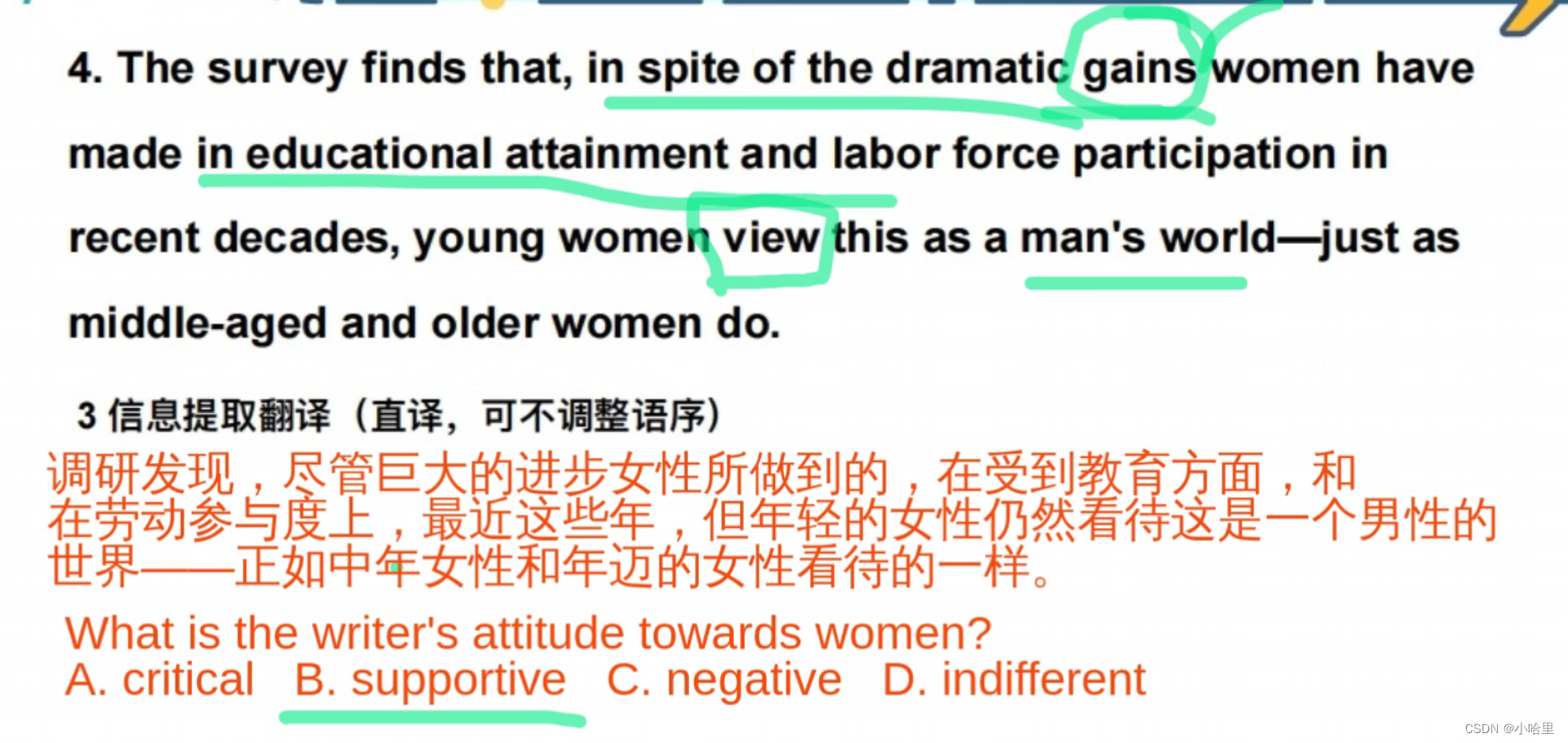
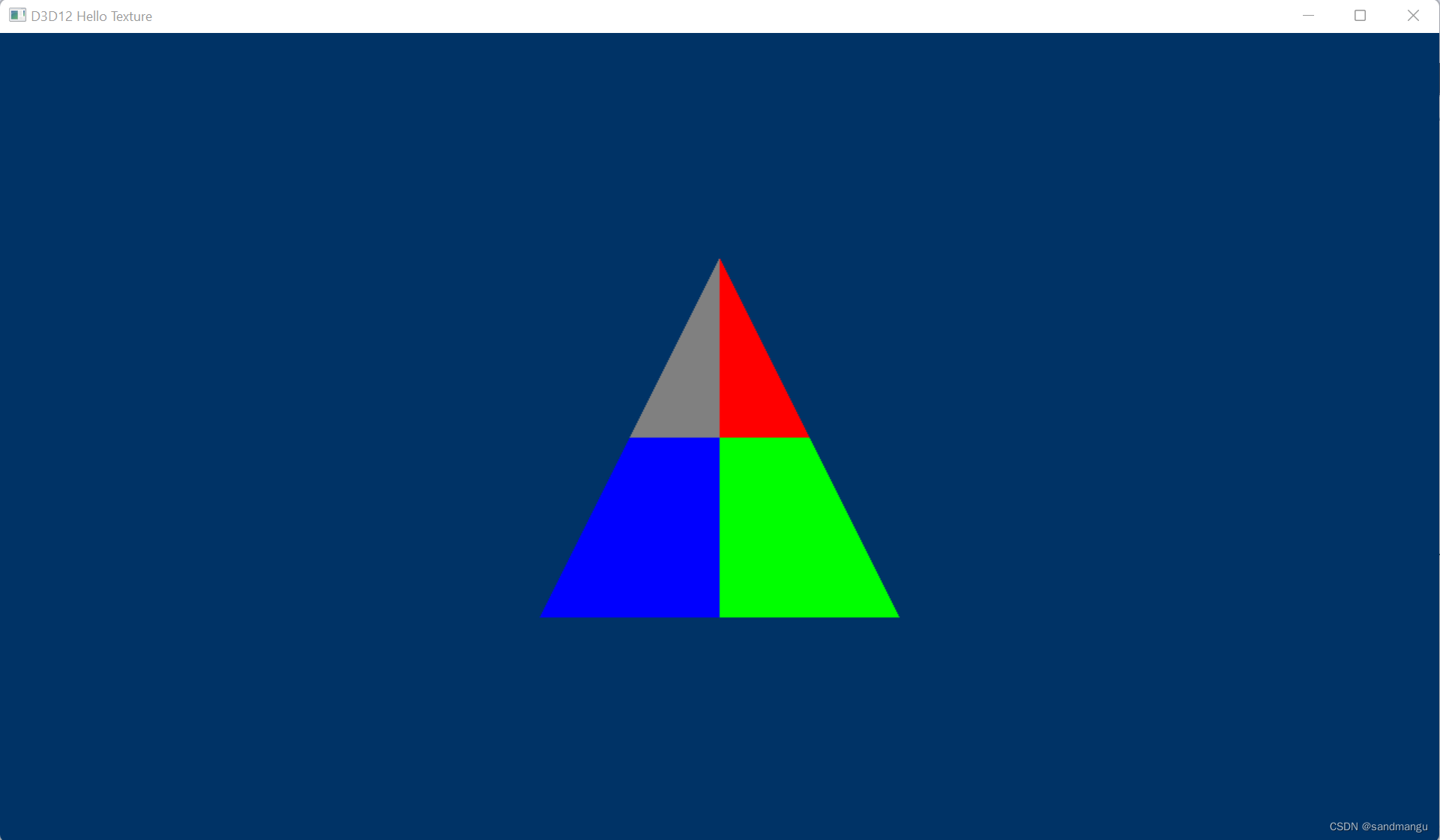

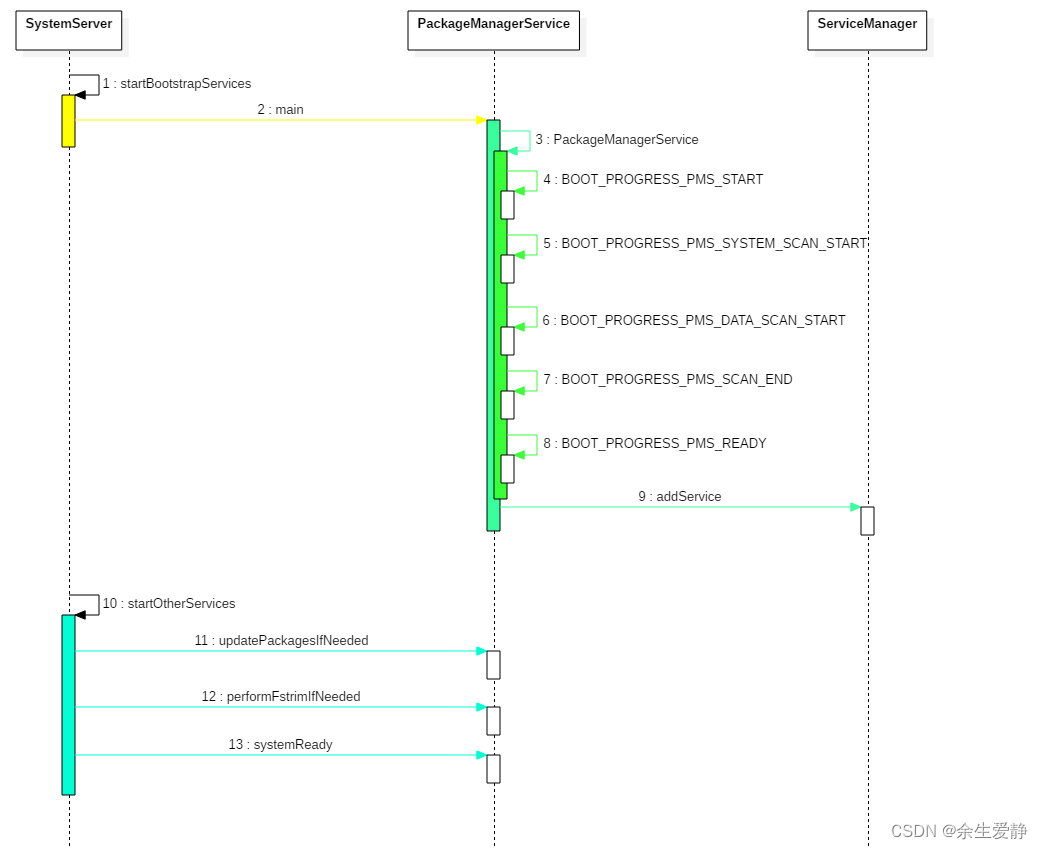
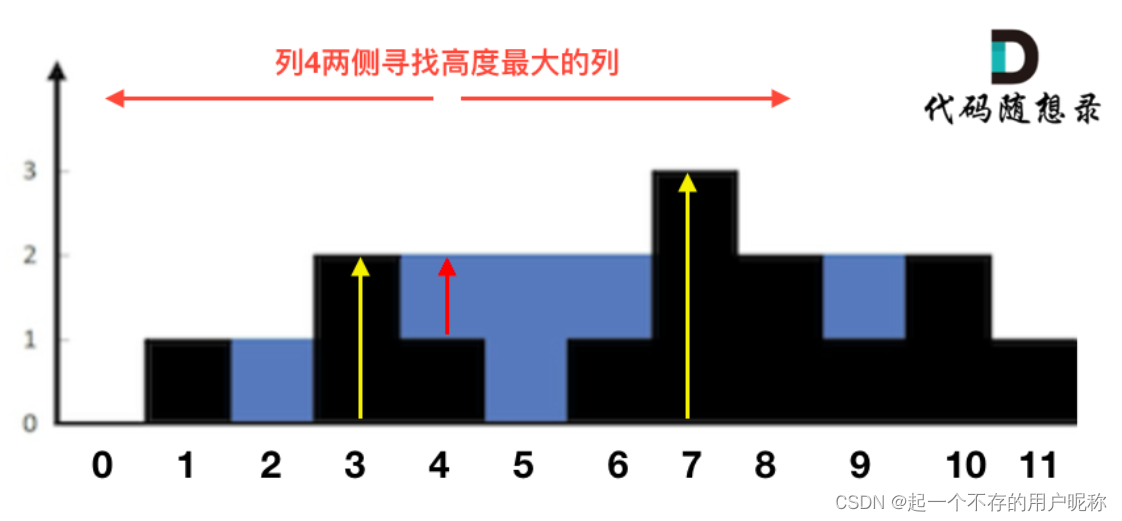
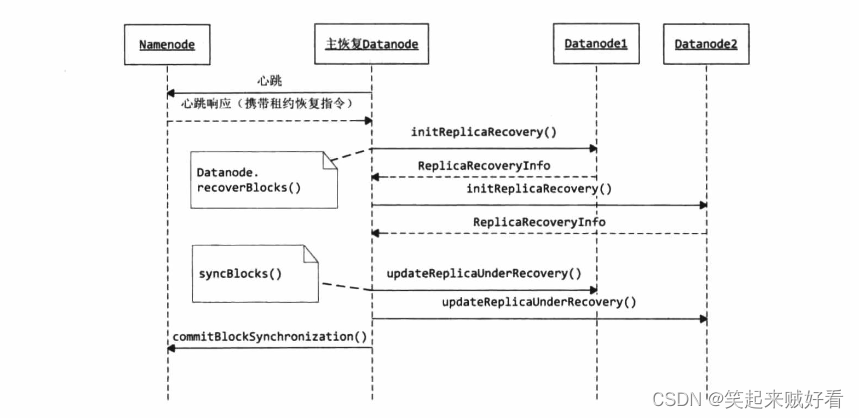
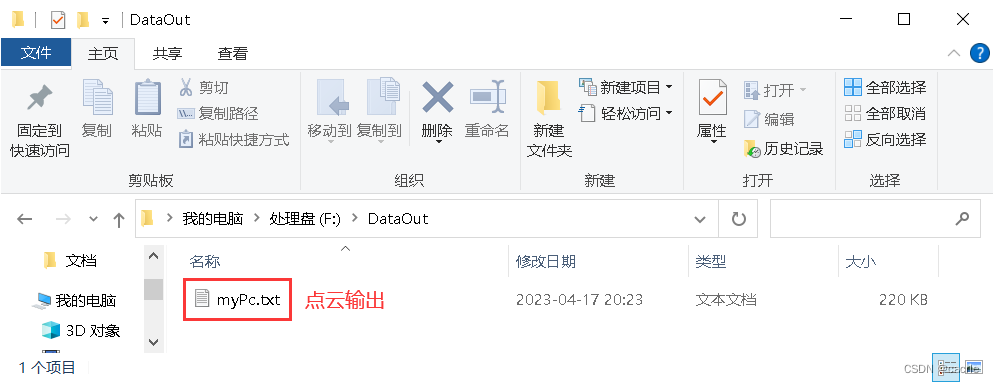
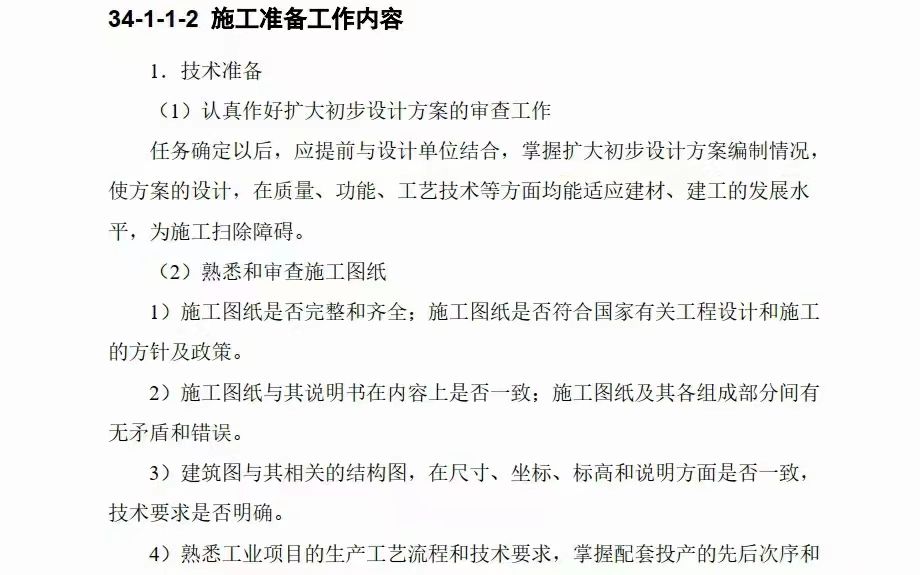
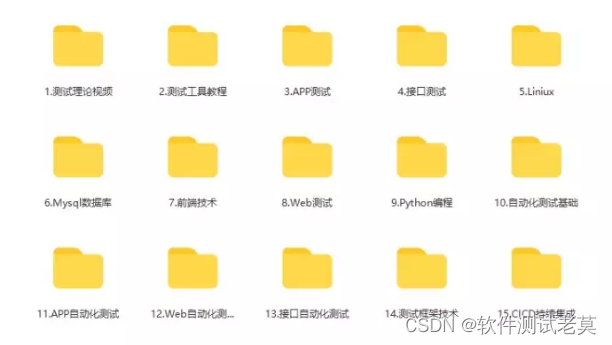
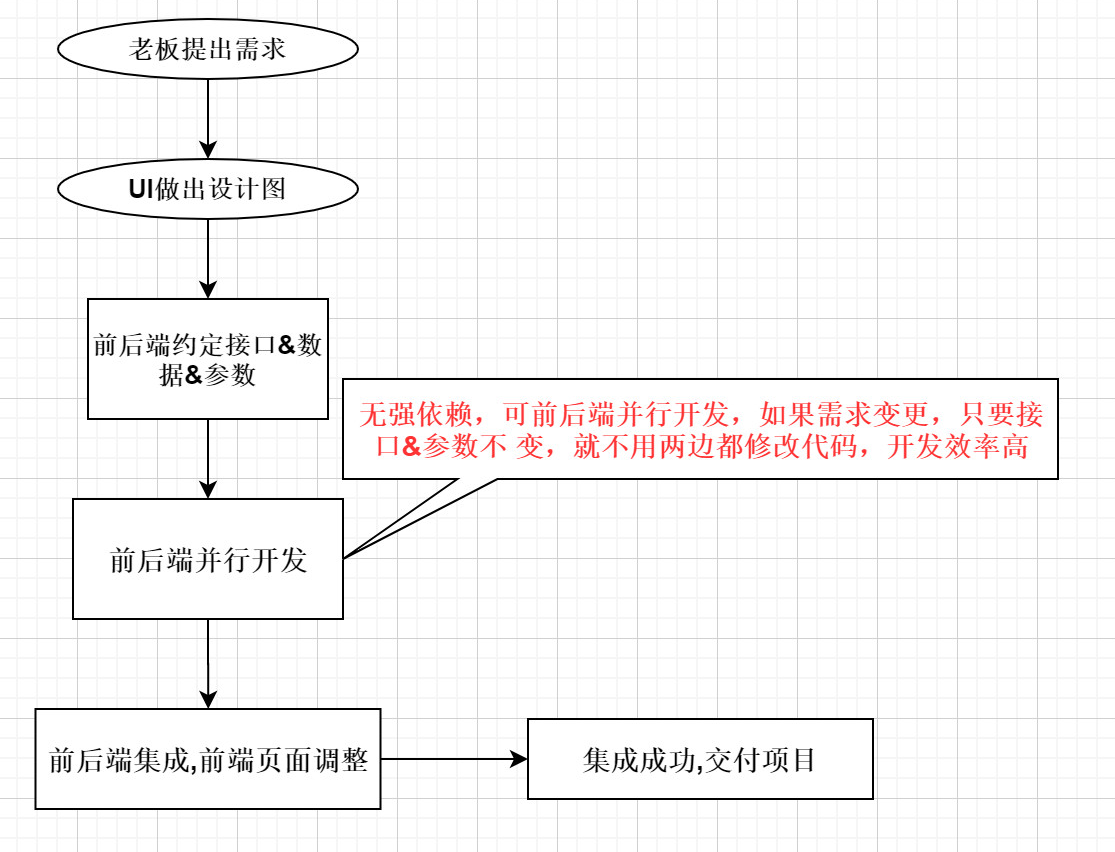
![[Netty] FastThreadLocal (十四)](https://img-blog.csdnimg.cn/9ea96678b6644e3081f149a58dd24392.png)
![[架构之路-159]-《软考-系统分析师》-10-系统分析-6-现有业务流程分析, 系统分析最核心的任务](https://img-blog.csdnimg.cn/e83cacd385c64fa5a7278e09ffd3b3b4.png)

